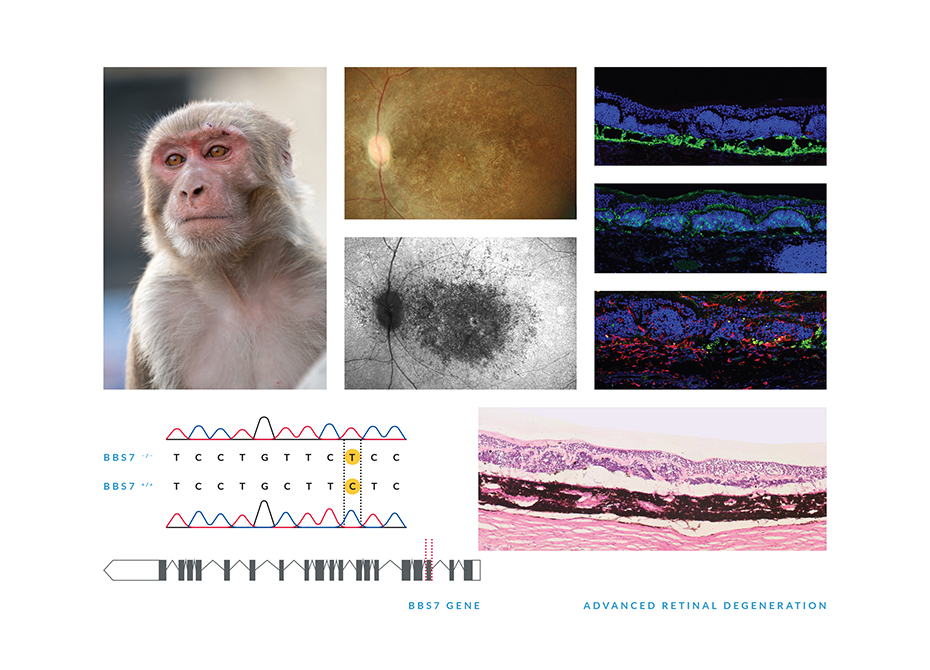
Accelerating scientific research in retinal disease
The discovery of naturally occurring retinal degeneration due to a BBS7 gene mutation in three rhesus macaques offers the first opportunity to study an inherited photoreceptor degeneration in a nonhuman primate model. The macaques are part of a colony at the Oregon National Primate Research Center at OHSU.
Animal model sheds light on disease progression
The retinas of rhesus macaques are nearly identical to human retinas, so this animal model of Bardet-Biedl Syndrome (BBS), a form of retinitis pigmentosa, will provide new insight into disease progression and interventions.
“This discovery highlights the important role nonhuman primate models can play in developing therapies for retinal diseases,” said Martha Neuringer, Ph.D., a neuroscientist and research associate professor of ophthalmology. “We have been involved in testing several gene therapies that have gone on to clinical trials — achromatopsia and retinoschisis, as examples — but we were testing the surgical technique or the delivery of a vector or the side effects of a treatment, not curing the disease itself. Now, we can track the progression of the disease in the animals and test potentially curative retinal gene or cell replacement therapies.”
Greater possibilities for retinal degenerative disease therapies
Though having the animal model may lead to a cure for BBS in the future, the possibilities expand beyond one form of disease.
“The expectation and hope of this discovery are that having nonhuman primate models will accelerate the development of therapies for retinitis pigmentosa and other retinal degenerative diseases,” Neuringer said. Neuringer and her colleagues received grants from the National Eye Institute and Research to Prevent Blindness to breed more animals with the naturally occurring BBS7 mutation. The Oregon National Primate Research Center — one of only seven in the nation — has several strengths to support this effort, including the Assisted Reproductive Technology Core Laboratory, the Primate Genetics Division and a full spectrum of retinal imaging instruments and surgical suites. “Our facilities and procedures are up to human standards,” Neuringer said. “We work with an incredible team of vitreoretinal surgeons from OHSU Casey Eye Institute, and we have a full range of noninvasive retinal imaging instruments to measure disease progression and effects of treatments.”
OHSU Casey Eye Institute’s Primate Genetics Division genome project locates mutations
Betsy Ferguson, Ph.D., of the Oregon National Primate Research Center at OHSU leads an effort to genetically sequence 2,000 rhesus macaques, funded by the National Institutes of Health. Ferguson and Samuel Peterson, Ph.D., examined the genomes of the animals that the Neuringer lab discovered, and they quickly found that they had a mutation of the BBS7 gene, one of at least 21 genes associated with BBS. Using this information, they quickly located a third monkey with the mutation, and identified over 50 carriers of the gene mutation within the rhesus macaque colony at OHSU. They have also identified a pedigree of primates with neuronal ceroid lipofuscinosis, a storage disease that is associated with progressive retinal degeneration. This pedigree will also enable pioneering work on gene therapy in this type of disease.